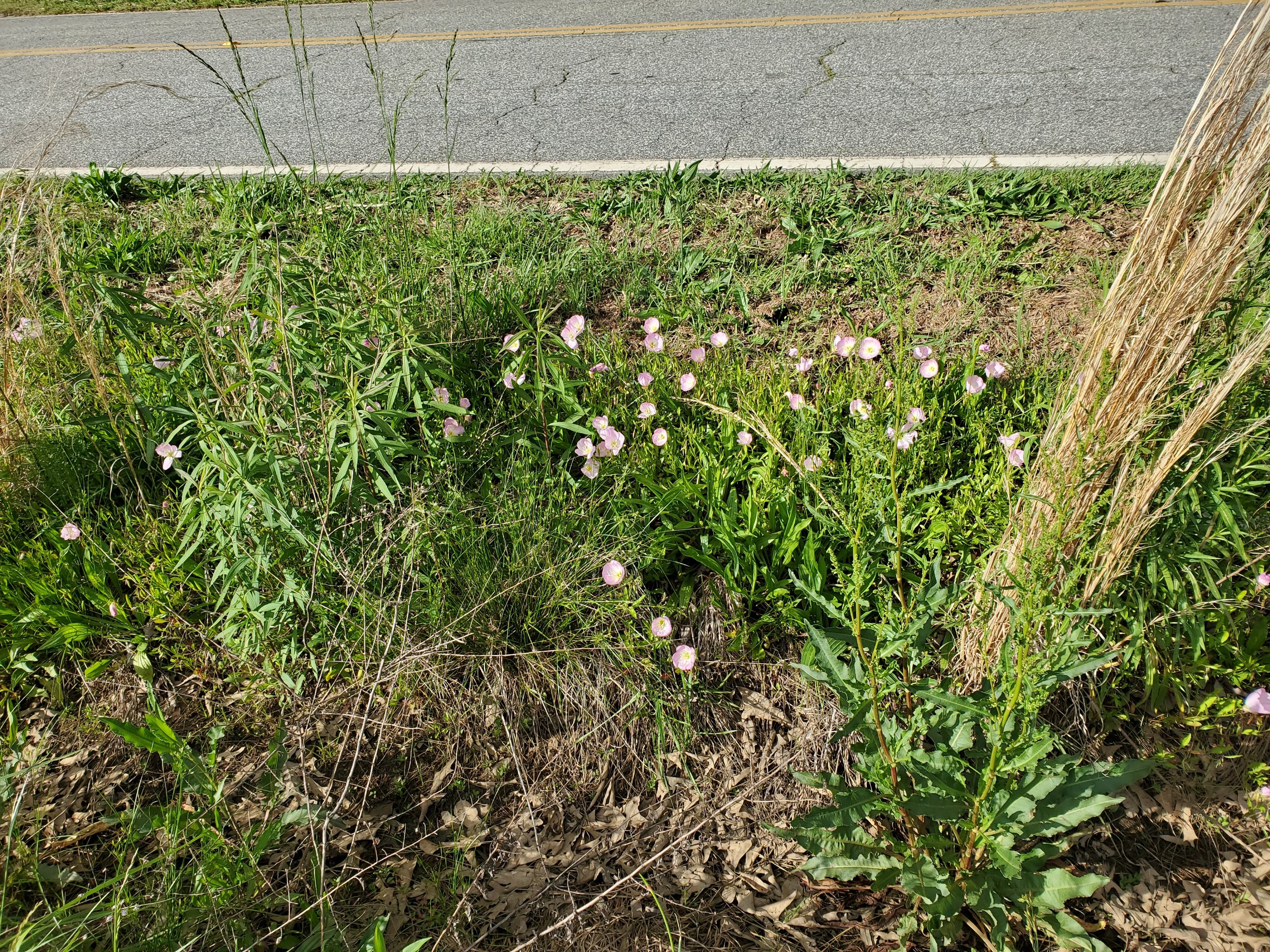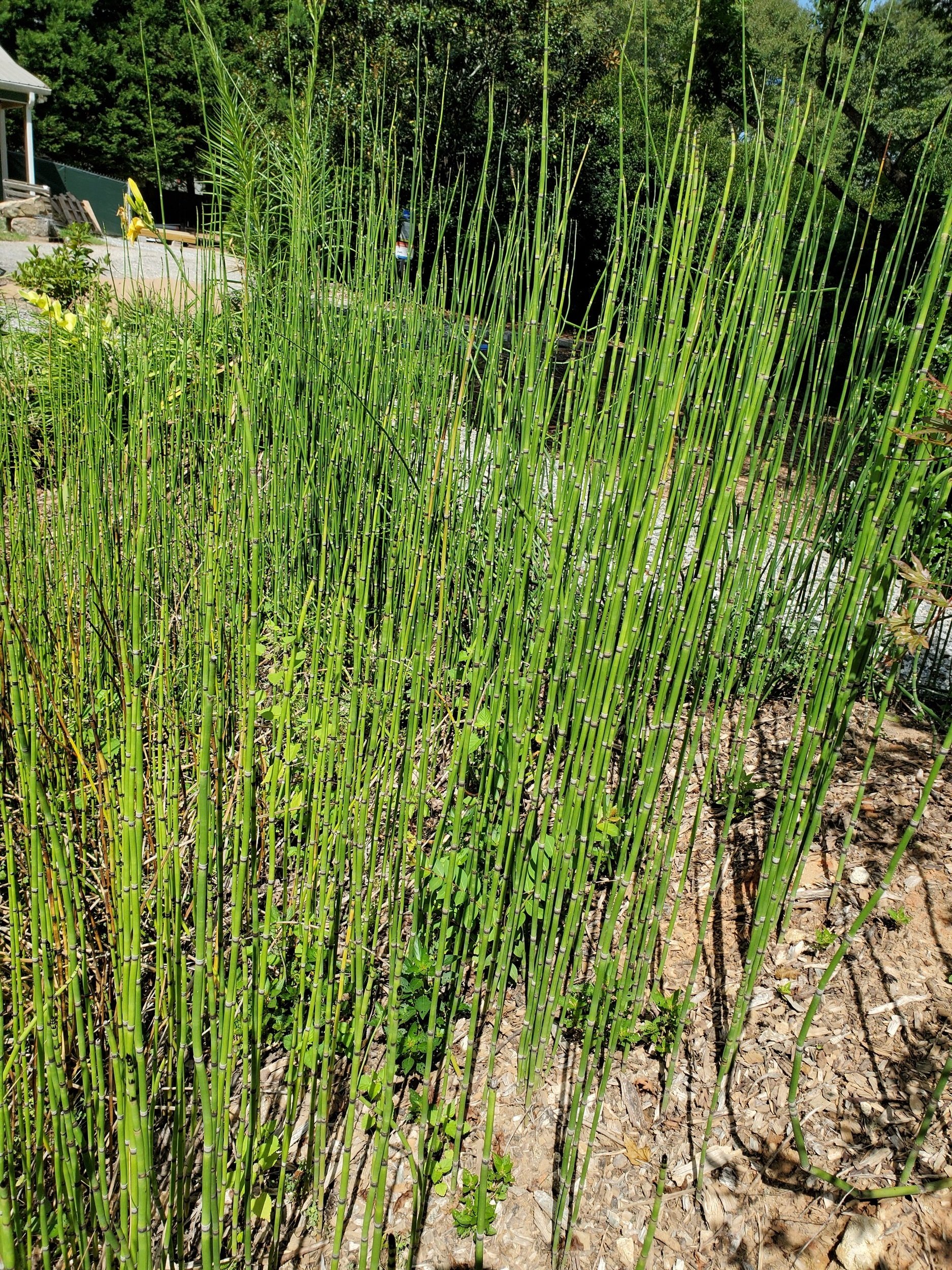One of my regular blog readers asked if there were any plants that I DON’T like. Well, yes, there are a few.
Cortaderia selloana - Pampas Grass
Pretty from a distance. Up close, the razor-sharp leaf edges slice one to shreds. When it is time for the fall cutback, get out the meat-handlers metal mesh gloves and protect all skin.
Pampas Grass
Houttuynia cordata ‘Tricolor’ - Chamaeleon Plant
This spawn of Satan will spread out of control almost immediately upon touching soil. The crushed leaves smell awful (other common names include Dog’s Breath). I volunteered to help a friend remove this from her garden. It involved lots of digging and multiple applications of herbicide. After three months of vigilance, we thought the battle was won. A few months later, we found a piece that has snaked its way under a nine-foot width of concrete to encroach on her lawn.
Chameleon Plant has another common name, “Dog’s Breath” to describe the odor of its crushed foliage.
Oenothera ‘Siskyou’ - Pink Evening Primrose
Impossible to eradicate. No matter how many times you pull it out, seedling pop up everywhere. When I worked in a garden center, customers would describe themselves as Plant Killers and ask for something un-killable. I blush to think of the number of times I placed one of these in their hands and assured them, “This plant will grow on a concrete block.” I hereby apologize to all you victims.
Pink Evening Primrose magically appears in unlikely places — like this roadside ditch alongside a highway.
Yucca
Needle-like points at the ends of the leaves draw blood when you swear you were at least ten feet away. I have mowed over these, dug out roots, sprayed herbicide, and done everything else in my gardener’s Box of Tricks to remove several of these that were planted by my husband’s grandmother. We finally moved. I expect to see a news item any day now where one popped through the concrete foundation of an apartment building that was erected above.
A flowering patch of Yucca, just waiting to draw blood.
Equisetum - Horsetail Rush
Prehistoric plant that should have died along with the dinosaurs. It is scratchy and coarse. Some gardeners find it attractive. To those, I say “keep it in a container” or you will be grubbing it out of your garden for the remainder of your life. It did not survive by being delicate.
Horsetail rush, a prehistoric survivor.
Vinca
Not an evil plant, but it spreads enthusiastically. Stems root wherever nodes touch soil. At my former home, a previous owner planted it against the foundation. At first, it concealed the brick under a lovely green screen, populated with blue flowers. It soon became a snake haven with the need for almost weekly trimming. This was one of the very few occasions in which I resorted to herbicide to eradicate a plant. I pulled all the dead stems and tossed them into the woods…where they came back to life and took over a half-acre while I was not watching. It is deer resistant.








